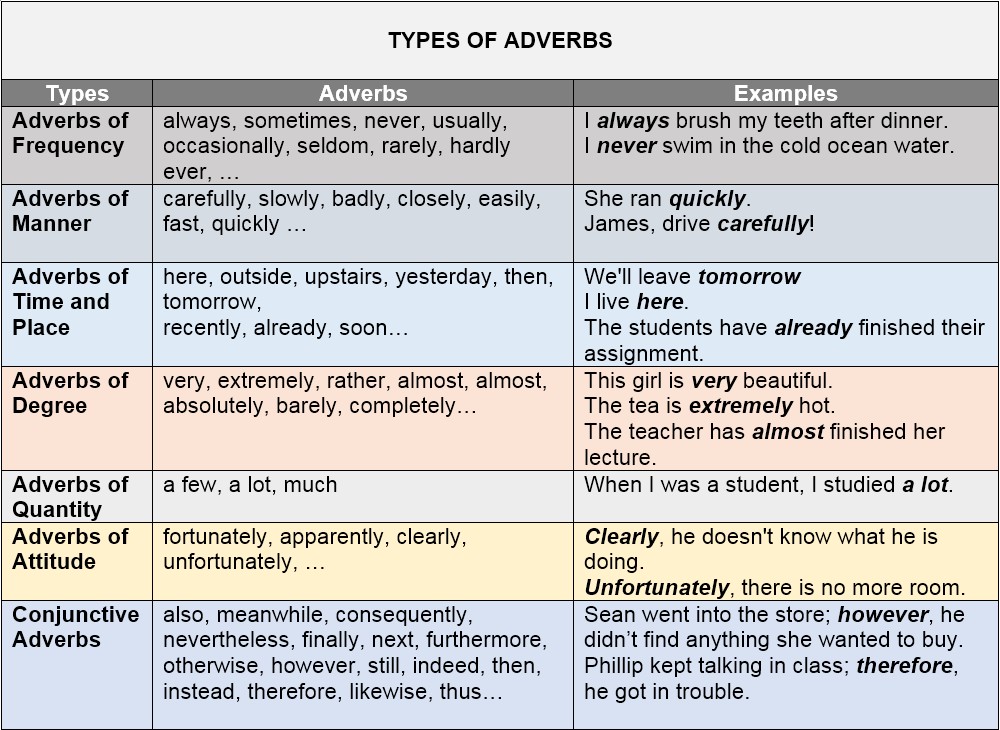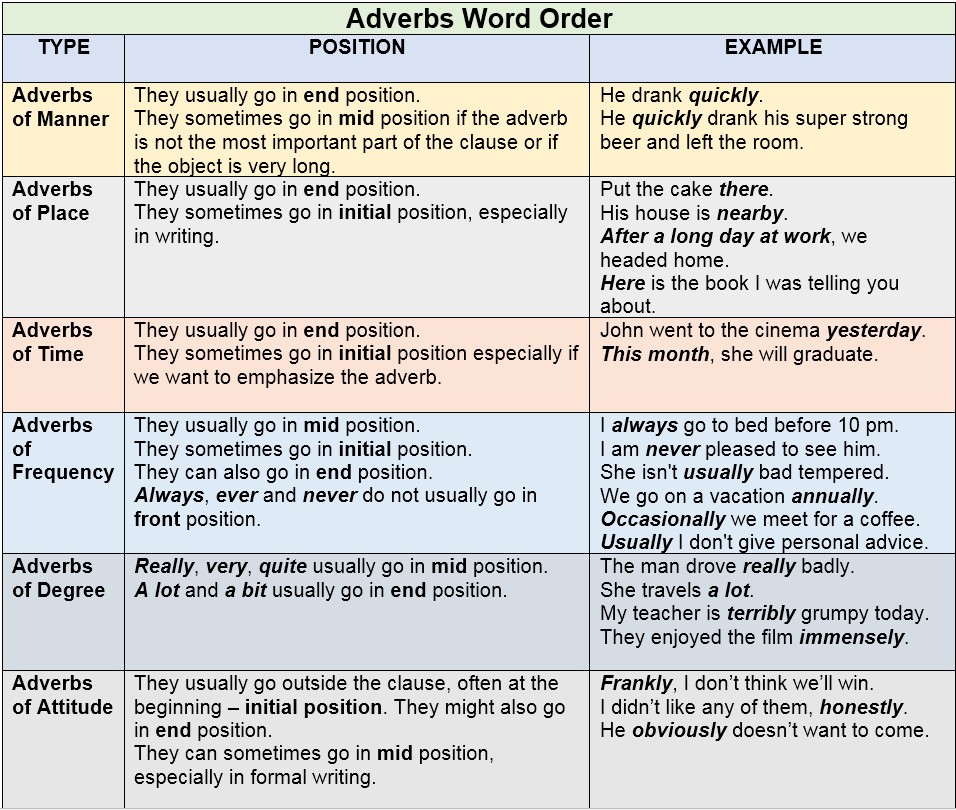Download
Basic English Grammar Book for Students PDF File
ADVERBS
DEFINITION:
An adverb is a word or set of words that modifies verbs, adjectives, or other adverbs.
Adverbs tell us in what way someone does something. Adverbs are a very broad collection of words that may describe how, where, or when an action took place.
When they modify verbs, they answer the following questions: how? when? Where? how often/much? Adverbs can be used before or after the verb.
When they modify adjectives, they come before the adjectives.
When adverbs modify other adverbs, they are called INTENSIFIERS. Intensifiers always come before the adverbs they modify.
EXAMPLE:
He drove slowly. (adverb slowly modifies the verb drove: How did he drive?)
He drove a very fast car. (adverb very modifies adjective fast: How fast was his car?)
She moved quite slowly down the aisle. (adverb quite modifies adverb slowly: How slowly did she move?)
Adverbs frequently end in -ly. However, many words not ending in -ly as well as some phrases serve an adverbial function. Also, an -ly ending is not a guarantee that a word is an adverb. The words lovely, lonely, motherly, friendly, neighborly, for instance, are adjectives.
Other Types of Adverbs
There are different adverbs:
Adverbs of Frequency – always, sometimes, never, …
Adverbs of Manner – carefully, slowly…
Adverbs of Time and Place – here, yesterday, then…
Adverbs of Relative Time – recently, already, soon…
Adverbs of Degree – very, extremely, rather…
Adverbs of Quantity – a few, a lot, much…
Adverbs of Attitude – fortunately, apparently, clearly…
Conjunctive Adverbs – furthermore, however, thus, also, ….
Adverbs Word Order
Generally, adverbs can go in three different positions. But remember that not all adverbs can go in all three positions: initial, mid-position, and end position.
Initial position – adverb used at the beginning of the sentence.
EXAMPLE:
Suddenly, John jumped out of his bed.
Sometimes I play golf at the weekend.
Quickly, I changed my opinion.
Mid-position – adverb can be used in the middle of the sentence either before the verb or after the first auxiliary verb but before the main verb.
EXAMPLE:
I sometimes play tennis at the weekend.
Jason always calls on his sister’s birthday.
My father has never been a team player.
Do you usually have dinner that early?
However, adverbs are usually placed after the verb.
EXAMPLE:
He speaks clearly.
When there is an object, the adverb is usually placed after the object in the verb + object phrase.
EXAMPLE:
I put the vase carefully on the table.
However, it is unusual to put an adverb between the verb and its object.
EXAMPLE:
She wrote the letter quickly.
She wrote quickly the letter. (we would not say it like this)
End position – adverb can be used and the end of the sentence.
EXAMPLE:
They finished their drink quickly.
Jack got out of his bed suddenly.
She didn’t play the piano very well.
Adverbs of indefinite time and frequency (often, recently, sometimes) can go in mid-position or end position.
EXAMPLE:
His friend often comes here.
His friend comes here often.

